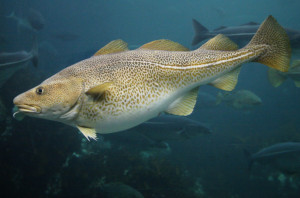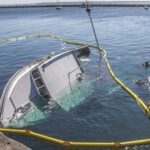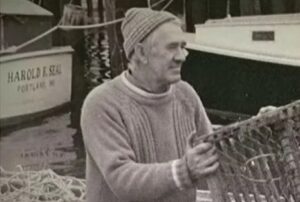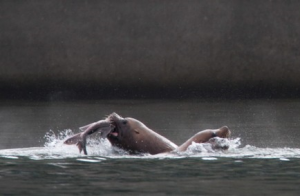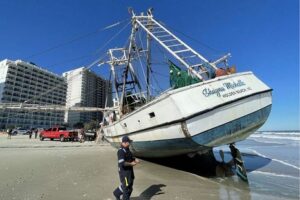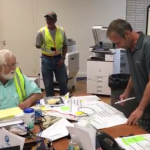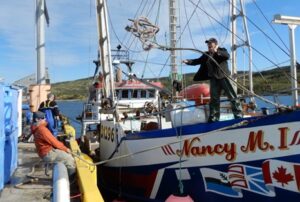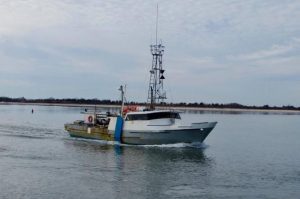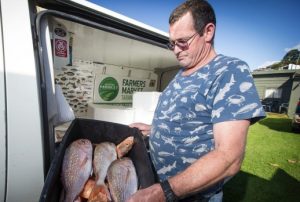Daily Archives: May 21, 2016
Then there was that time the Coast Guard tried using pigeons for sea rescues
 Back in the late 1970s and early 80s, the Coast Guard thought they had a better way to search for people lost in the ocean. They tested using pigeons affixed to the underside of helicopters. Yes, like the pigeons in the park. And, yes, it did work. The birds performed about twice as well as their human counterparts at spotting “appropriate targets” on their first pass over an area. The pigeons involved in Project Sea Hunt, as the effort was known, were first sent to “basic training.” For obvious reasons, about the only thing pigeon basic shared with human basic was the name. Pigeons were placed in training chambers with “peck keys” that released food when pressed. Once the pigeons got the hang of the keys, their training boxes would be faced toward Kaneohe Bay, Hawaii, where a buoy with a radio-operated orange plate floated. Trainers would expose the orange plate and then reward the pigeon when it hit the keys, but wouldn’t feed the pigeons if the plate wasn’t exposed. Read the story here, see more images here 15:22
Back in the late 1970s and early 80s, the Coast Guard thought they had a better way to search for people lost in the ocean. They tested using pigeons affixed to the underside of helicopters. Yes, like the pigeons in the park. And, yes, it did work. The birds performed about twice as well as their human counterparts at spotting “appropriate targets” on their first pass over an area. The pigeons involved in Project Sea Hunt, as the effort was known, were first sent to “basic training.” For obvious reasons, about the only thing pigeon basic shared with human basic was the name. Pigeons were placed in training chambers with “peck keys” that released food when pressed. Once the pigeons got the hang of the keys, their training boxes would be faced toward Kaneohe Bay, Hawaii, where a buoy with a radio-operated orange plate floated. Trainers would expose the orange plate and then reward the pigeon when it hit the keys, but wouldn’t feed the pigeons if the plate wasn’t exposed. Read the story here, see more images here 15:22
Coast Guard Cutter Sanibel crew retrieves stranded fishing vessel off Nantucket Coast
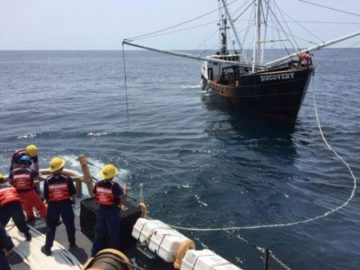 The crew of Coast Guard Cutter Sanibel towed an 84-foot commercial fishing vessel Friday with seven people aboard after the vessel became disabled 100 miles off the coast of Nantucket. Crewmembers aboard the fishing vessel Discovery, homeported in New Bedford, contacted watchstanders at Coast Guard Sector Southeastern’s command center at approximately 2:30 a.m. Friday reporting they had a disabled rudder and needed assistance. Sector Southeastern watchstanders issued a marine safety information broadcast at about 3 a.m. requesting nearby fishermen to assist. The request went unanswered by the other fishing vessels in the area. At approximately 3:30 a.m., the Coast Guard Cutter Sanibel crew diverted to assist. Link 15:01
The crew of Coast Guard Cutter Sanibel towed an 84-foot commercial fishing vessel Friday with seven people aboard after the vessel became disabled 100 miles off the coast of Nantucket. Crewmembers aboard the fishing vessel Discovery, homeported in New Bedford, contacted watchstanders at Coast Guard Sector Southeastern’s command center at approximately 2:30 a.m. Friday reporting they had a disabled rudder and needed assistance. Sector Southeastern watchstanders issued a marine safety information broadcast at about 3 a.m. requesting nearby fishermen to assist. The request went unanswered by the other fishing vessels in the area. At approximately 3:30 a.m., the Coast Guard Cutter Sanibel crew diverted to assist. Link 15:01
Jim Kendall: Little-known effort puts Northeast fishermen at risk under the National Ocean Policy
 In my 50-plus years as a member of the New England fishing community, I have witnessed many threats to our survival as a result of regulatory overreach. However, there is one in particular that demands the attention of everyone concerned about maintaining a viable fishing industry in our region: the coastal and marine spatial planning (CMSP) effort under the National Ocean Policy. Haven’t heard of it? Believe me, you’re not alone. Just like catch shares, this initiative has been implemented around rather than through Congress, its genesis being a presidential executive order issued in 2010 that led to the chartering of a government-only Northeast Regional Planning Body (RPB) and a National Ocean Council charged with overseeing it and other RPBs around the country. The RPB’s task: Develop a coastal and marine spatial plan for waters spanning from Connecticut to Maine. Now, in a rush to complete a plan for the Northeast before the end of 2016, the RPB is set to release a draft plan that federal agencies will be bound to implement when final. Read the rest here 13:59
In my 50-plus years as a member of the New England fishing community, I have witnessed many threats to our survival as a result of regulatory overreach. However, there is one in particular that demands the attention of everyone concerned about maintaining a viable fishing industry in our region: the coastal and marine spatial planning (CMSP) effort under the National Ocean Policy. Haven’t heard of it? Believe me, you’re not alone. Just like catch shares, this initiative has been implemented around rather than through Congress, its genesis being a presidential executive order issued in 2010 that led to the chartering of a government-only Northeast Regional Planning Body (RPB) and a National Ocean Council charged with overseeing it and other RPBs around the country. The RPB’s task: Develop a coastal and marine spatial plan for waters spanning from Connecticut to Maine. Now, in a rush to complete a plan for the Northeast before the end of 2016, the RPB is set to release a draft plan that federal agencies will be bound to implement when final. Read the rest here 13:59
Whatcom fishing fleet likely to stay longer in Alaska this season
 With the fishing season in local waters still uncertain, a bigger contingent of the Whatcom County commercial fishing fleet may stay in Alaska longer this season. Commercial fishing men and women are busy loading up boats in places like Squalicum Harbor, with many planning to head north in the coming days and weeks. Loren Kapp and Cathy Wade are expecting a good, but not blockbuster, fishing season in Alaska. They operate the Chief Kwina, a former Lummi Island ferry that is now a salmon tender boat. They plan to depart for Alaska on Monday, May 23. “With the warm blob going away, it should help,” said Kapp, referring to the area of warm water that settled in the ocean waters east of Vancouver Island for the past couple of years. There is the potential for cooler waters in the area this year, which is what the salmon prefer. Read the rest here 12:30
With the fishing season in local waters still uncertain, a bigger contingent of the Whatcom County commercial fishing fleet may stay in Alaska longer this season. Commercial fishing men and women are busy loading up boats in places like Squalicum Harbor, with many planning to head north in the coming days and weeks. Loren Kapp and Cathy Wade are expecting a good, but not blockbuster, fishing season in Alaska. They operate the Chief Kwina, a former Lummi Island ferry that is now a salmon tender boat. They plan to depart for Alaska on Monday, May 23. “With the warm blob going away, it should help,” said Kapp, referring to the area of warm water that settled in the ocean waters east of Vancouver Island for the past couple of years. There is the potential for cooler waters in the area this year, which is what the salmon prefer. Read the rest here 12:30
Sussex waterman nabbed for mutiple crabbing violations – cops a plea
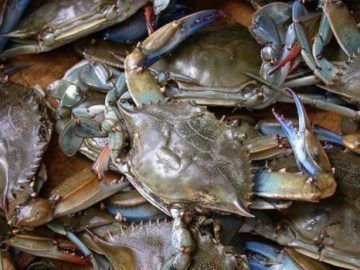 Delaware Division of Fish & Wildlife Natural Resources Police arrested a Sussex County man May 19 for multiple commercial crabbing violations on the Inland Bays, officials announced in a release. John L. Fabryka, 53, of Ocean View, was charged with one count of unlawful commercial crabbing in a non-commercial area, 10 counts of tending more than two recreational crab pots, 10 counts of improperly marked recreational crab pots and six counts of failure to tend recreational crab pots at least once within required 72-hour timeframe, according to the release. Read the rest here 11:07
Delaware Division of Fish & Wildlife Natural Resources Police arrested a Sussex County man May 19 for multiple commercial crabbing violations on the Inland Bays, officials announced in a release. John L. Fabryka, 53, of Ocean View, was charged with one count of unlawful commercial crabbing in a non-commercial area, 10 counts of tending more than two recreational crab pots, 10 counts of improperly marked recreational crab pots and six counts of failure to tend recreational crab pots at least once within required 72-hour timeframe, according to the release. Read the rest here 11:07
Gov. John Bel Edwards appoints Telley Madina to the Louisiana Wildlife and Fisheries Commission
 Commercial fishing interests have a new representative on the state board that regulates their industry. Gov. John Bel Edwards has appointed Telley Savalas Madina of New Orleans to the Louisiana Wildlife and Fisheries Commission. Madina, who will represent the commercial fishing and fur industries, replaces Nathan Wall, an alligator farmer from Springfield, who recently resigned from the seven-member board. Madina was executive director of the Louisiana Oystermen Association in 2010 and 2011 and is still a board member. He serves as CEO of Red & Blue Consulting of New Orleans. The Wildlife and Fisheries Commission sets policy dealing with recreational and commercial fishing, hunting and other outdoor activities. Read the rest here 09:34
Commercial fishing interests have a new representative on the state board that regulates their industry. Gov. John Bel Edwards has appointed Telley Savalas Madina of New Orleans to the Louisiana Wildlife and Fisheries Commission. Madina, who will represent the commercial fishing and fur industries, replaces Nathan Wall, an alligator farmer from Springfield, who recently resigned from the seven-member board. Madina was executive director of the Louisiana Oystermen Association in 2010 and 2011 and is still a board member. He serves as CEO of Red & Blue Consulting of New Orleans. The Wildlife and Fisheries Commission sets policy dealing with recreational and commercial fishing, hunting and other outdoor activities. Read the rest here 09:34
P.E.I. fishermen are not happy with the lobster size increase
 A decision to increase the lobster carapace size for Lobster Fishing Area 25 has upset the P.E.I. Fishermen’s Association. The Department of Fisheries and Oceans issued a notice to fishermen Friday informing them of the change. PEIFA executive director Ian MacPherson said he doesn’t believe the science supports a carapace increase. “Island fishermen just can’t see the value in having less choice for the consumer and having more lobster competing in certain size categories for price,” said MacPherson. “Half of the plants on Prince Edward Island rely on the smaller lobster as a large part of their marketing efforts. They have been marketing to different parts of the world that want that smaller lobster so, you know, this is a real disappointment.” Read the rest here 09:03
A decision to increase the lobster carapace size for Lobster Fishing Area 25 has upset the P.E.I. Fishermen’s Association. The Department of Fisheries and Oceans issued a notice to fishermen Friday informing them of the change. PEIFA executive director Ian MacPherson said he doesn’t believe the science supports a carapace increase. “Island fishermen just can’t see the value in having less choice for the consumer and having more lobster competing in certain size categories for price,” said MacPherson. “Half of the plants on Prince Edward Island rely on the smaller lobster as a large part of their marketing efforts. They have been marketing to different parts of the world that want that smaller lobster so, you know, this is a real disappointment.” Read the rest here 09:03


































